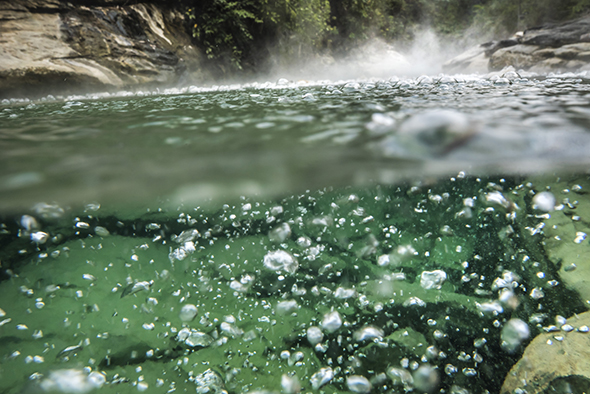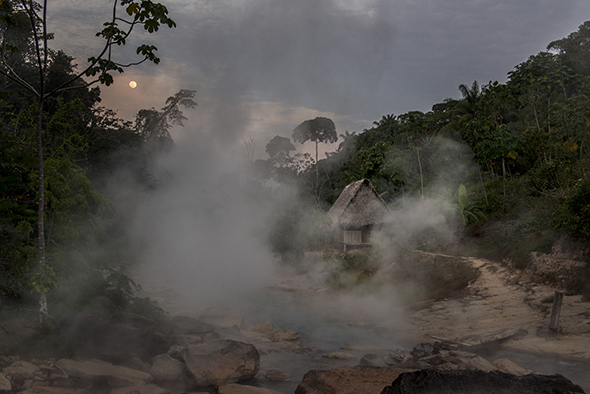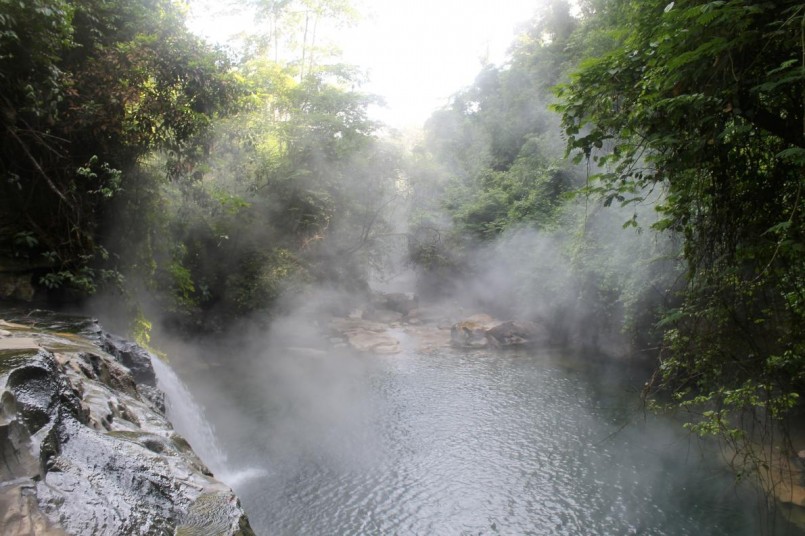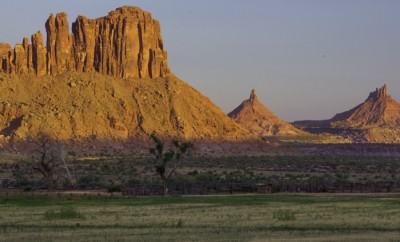South America
The Boiling River In The Depths Of The Amazon

Image: Devlin Gandy / National Geographic
The Boiling River In The Depths Of The Amazon
Deep in the Peruvian Amazon, there is a river known by the locals as Shanay-timpishka, which loosely translates to “boiled with the heat of the sun.” It is the legend of this boiling river that led Andrés Ruzo, a National Geographic Young Explorer, to his search to solve the mystery of this strange phenomena, a journey told in his book The Boiling River: Adventure and Discovery in the Amazon.
To begin with, Ruzo assures us that the river is quite real, and its boiling waters are hot enough to kill. According to measurements that he took along the four-mile river, the boiling river’s waters range in temperature from 120°-196°F.
“At these temperatures, I would have third-degree water burns in less than a second,” says Ruzo. “I’ve seen many animals boiled alive in this river—eyes always seem to cook first, turning milky white.”

Image: Devlin Gandy / National Geographic
Ruzo was helped by a local community that live near the river named the Mayantuyacu. A shaman of the Mayantuyacu acted as Ruzo’s guide and taught his people’s belief surrounding the river. According to their traditions, the boiling river is a place of spiritual power and is home to powerful jungle spirits.
The locals who live near the river help to protect it and the surrounding forest from exploitation and deforestation. They believe the river is so hot because of the presence of a spirit known as Yacumama. They say Yacumama is a giant serpent spirit who gives birth to both hot and cold waters. There is a large boulder at the river’s headwaters in the shape of a serpent head that is believed to represent Yacumama’s presence in the river.
Ruzo offers more scientific explanations for the boiling river.
“When I first got to the river, my biggest concern was whether it was natural or not. One of the hypotheses was that this was a volcanic feature, a magmatic system that the scientists had missed. It could also have been a non-volcanic feature, i.e. hot water flowing out of the earth at an anomalously high rate. The final theory, which was really the scary one for me, was that this place was not natural at all but the result of an oil field accident.”

Image: Andres Ruzo / National Geographic
Ruzo eventually discovered that the boiling river is a natural feature. It is a non-volcanic anomaly produced by some very hot springs pumping an enormous amount of hot water into the river from deep in the earth. The waters of the river sinks down deep into a fault, spends some time underground taking heat from the earth, and then rise back though the faults and cracks to create the boiling river.
Ruzo says he is now working with the two shamanic communities on the boiling river to have the area declared a Peruivian national monument. Right now, the jungle is considered legally open to clear-cutting. Ruzo, and those like him, are attempting to have the jungle rezoned so that it will only be open to eco-friendly activities. Ruzo believes the area must be protected not just because of the geologic feature of the boiling river, but also for it’s cultural and biological import.
“It’s a key location for traditional knowledge. The area around the Boiling River is not protected and has been totally clear-cut. As a result, all the fauna and flora that would normally be present across the entire area has been concentrated in this one small oasis of remaining jungle. So it’s now of great biological significance, as well. It’s this bastion of Amazonia in a sea of deforestation.”





0 comments